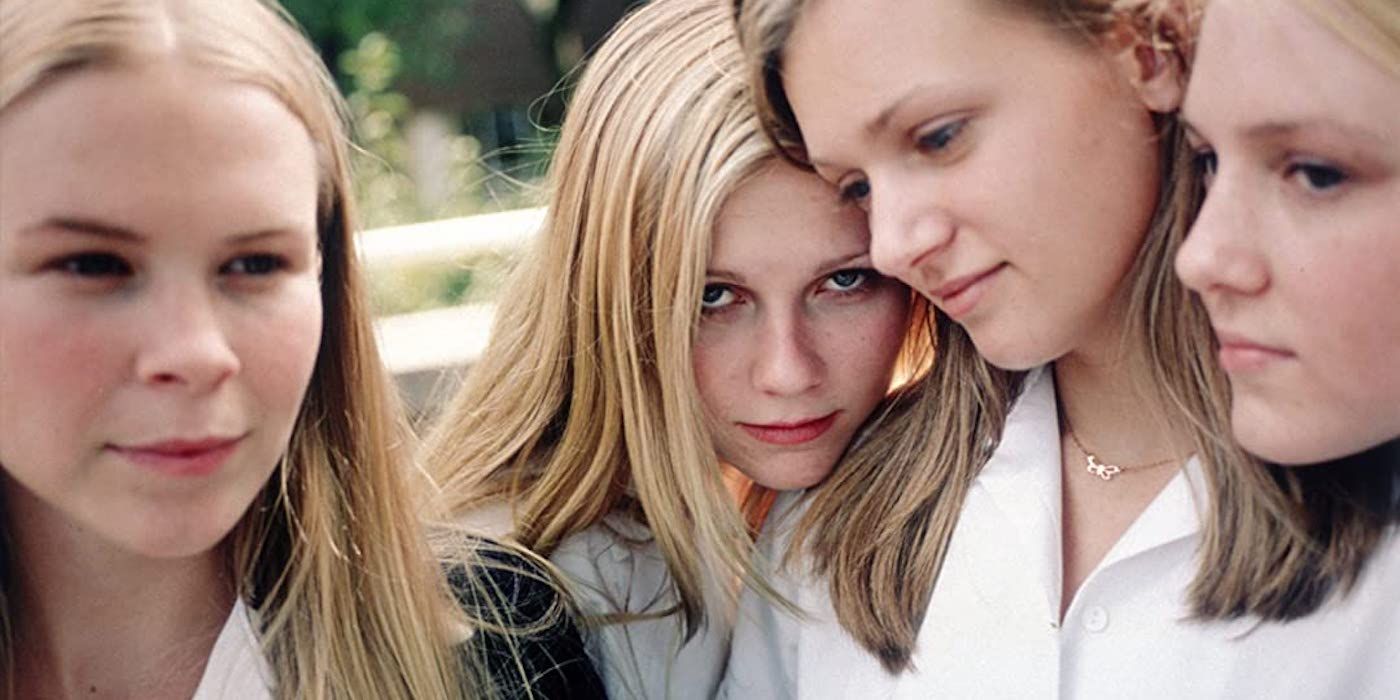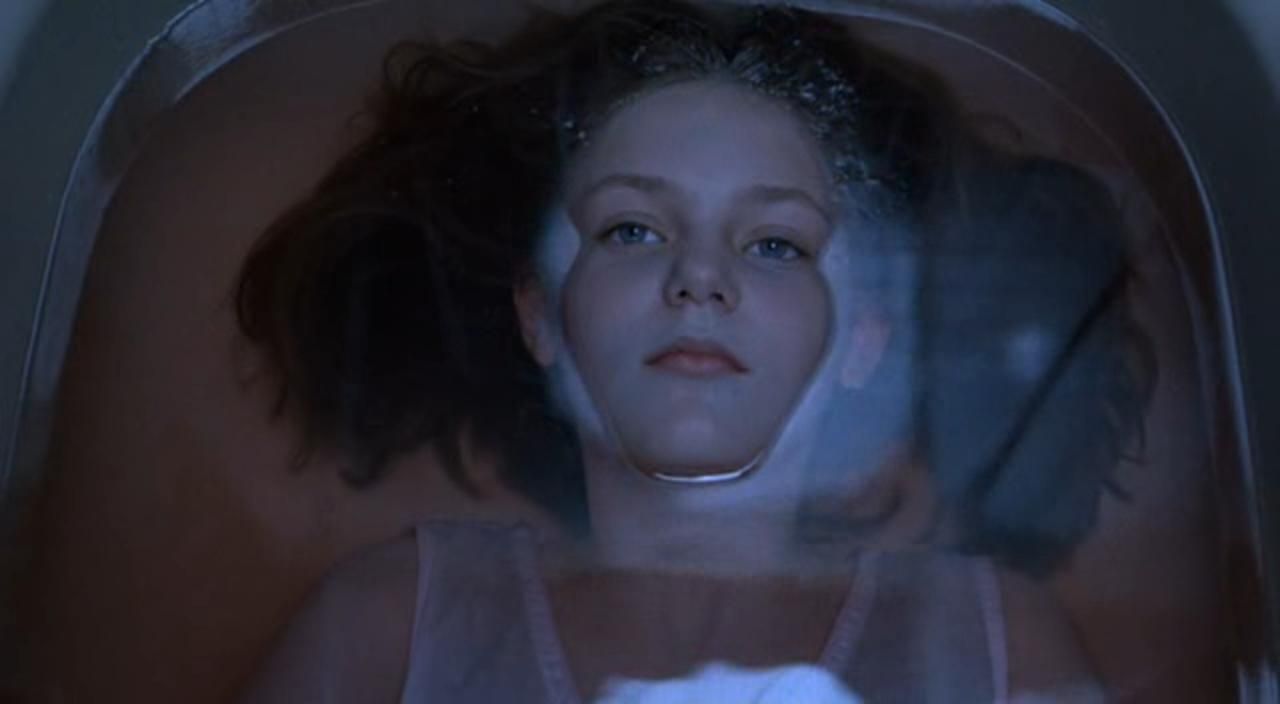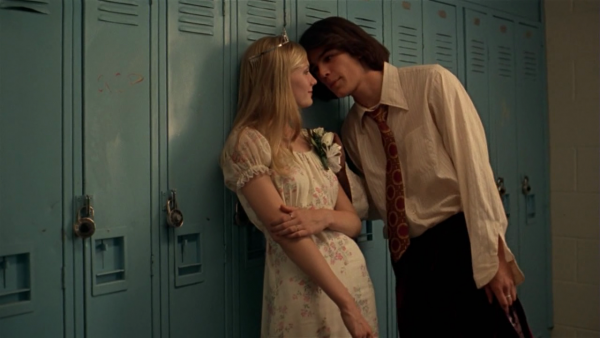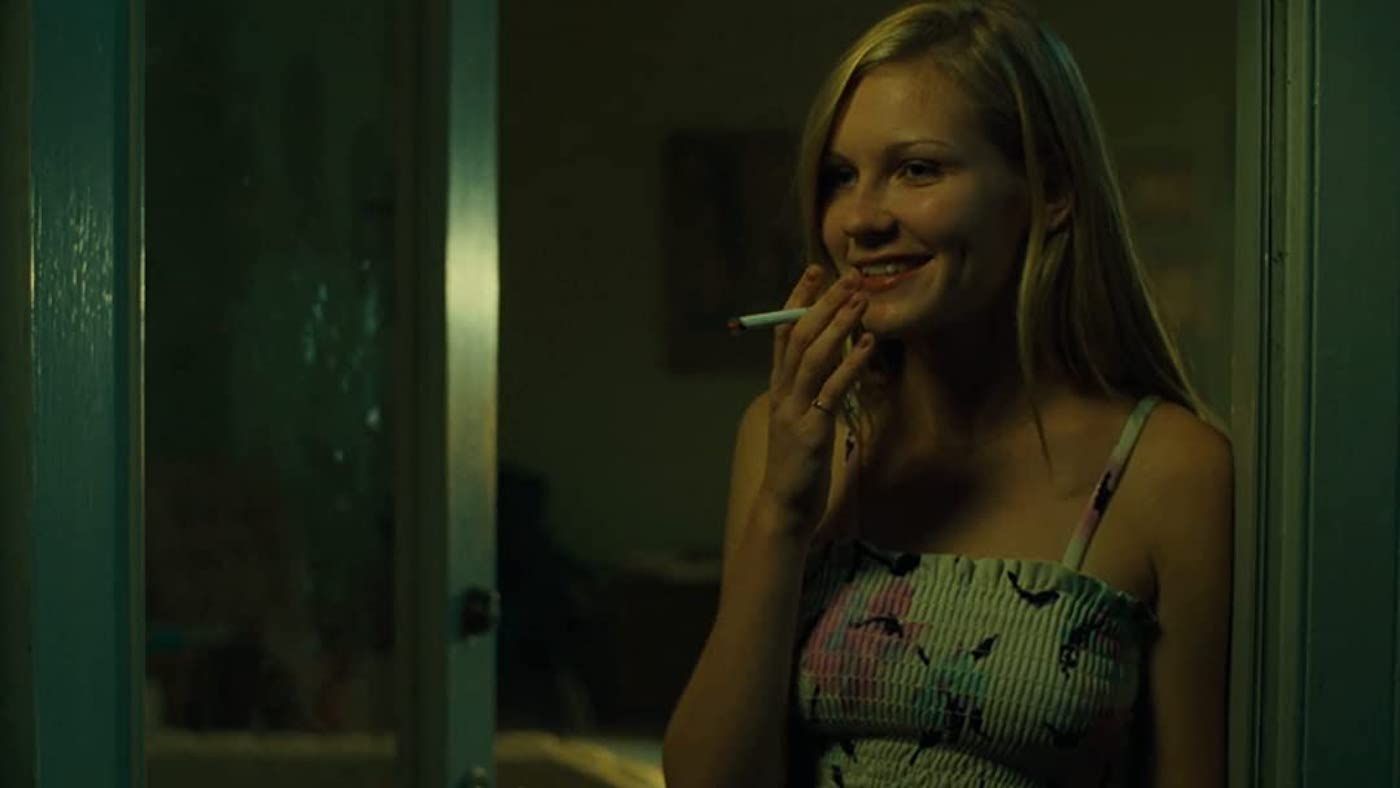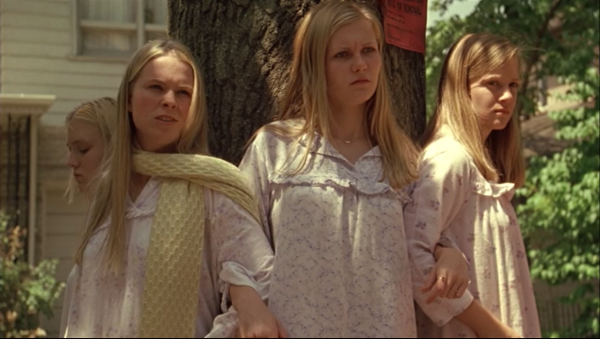“Cecilia was the first to go.” Combined with the image of a young Hannah Hall floating in a bathtub filled with bloody water, the opening line of Sofia Coppola’s The Virgin Suicides is an invitation and a punch to the stomach, all rolled into one. It is meant to entice viewers, making them curious what exactly is going on: if Cecilia was the first to go, then who was the second, and the third, and why are they gone? At the same time, the line adds to the shock provoked by the film’s title and assures us that there is no deceit at play here: this story is going to be just as bleak as its name suggests. Spoiler alert: this is a movie about teenage girls taking their own lives. And the fact that its opening line still manages to hold all of its original impact 22 years after The Virgin Suicides’ original release, with everyone knowing exactly where the film goes, speaks volumes about Coppola’s 2000 directorial debut.
It’s no stretch to call The Virgin Suicides one of the most influential movies of the past 25 years. As a matter of fact, simply pointing out that this movie is old enough to drive, vote, and drink already feels weird considering how attuned it is to our cultural landscape. Traces of its sense of melancholic nostalgia and muted, romantic despair can be found anywhere from the Tumblr aesthetic blogs of the 2010s to the depressing pastel filters of current cottage core Instagram accounts; from the music of Lana del Rey to the much livelier, and yet somewhat wistful movies of Greta Gerwig; and let’s not forget our never ending obsession with teenage sorrow and ennui, from Gossip Girl to Euphoria. Sure, the popularity of such things can’t be credited to Sofia Coppola alone, but it’s easy to recognize the DNA of The Virgin Suicides in all of these examples.
No matter what your personal feelings about it are, The Virgin Suicides is an extremely important film. This undying relevance has recently been crowned with a Criterion Collection release, featuring interviews with cast members, Coppola herself, and novelist Jeffrey Eugenides, who wrote the 1993 book of the same name that inspired the movie.
It’s not hard to understand why The Virgin Suicides has become such a cultural phenomenon. For starters, the movie is beautifully shot. The striking images created by Edward Lachman’s cinematography stay with you long after the end credits roll. Coppola’s writing is equally unforgettable, as are the performances by Hall, Kirsten Dunst, Kathleen Turner, James Woods, Josh Hartnett, and many others. Furthermore, the film’s themes of adolescent isolation, religious abuse, and gender-based oppression remain as topical as always. But there’s something more. The Virgin Suicides also manages to create an atmosphere of social decay and imminent environmental collapse that current viewers can’t help but identify with.
In the universe created by Coppola — a haunted, pastel infested version of a 1970s suburb — certain doom is always just around the corner. We see it in the dying trees scattered through the neighborhood’s lawns and in the chemical stench that infests the city in the final scenes of the movie, caused by a spill at a nearby industrial plant. Despite living in a rich, isolated neighborhood, the film’s background characters cannot escape the ecological catastrophe that is going on all around them. WASP-y teenage girls are forced to come out in pollution-themed debutante parties, and no matter how many trees city hall has cut down, the disease that is killing them just keeps spreading.
In the middle of this slow-burn environmental disaster, social ties also begin to lose their strength. We see the disconnect between the Lisbon family’s neighbors in the film’s mockumentary-like interviews, in which a parade of detached suburbanites proclaim their care and concern for the girls, but can’t help but treat their deaths as an amusing spectacle. One of them even manages to slide in a snarky remark about the Lisbon residence’s decoration. In what seems to be a rehab clinic, Lux’s (Dunst) former flame, Trip Fontaine (Hartnett), played as an adult by Michael Paré, professes his love for the girl he abandoned, but still fetishizes her.
This sense of general collapse isn’t exclusively a creation of Sofia Coppola, nor is it an afterthought. Widespread gloom and decay are an integral part of Eugenides’ novel, and they stem from the author’s experience growing up in Detroit. Both Coppola’s movie and Eugenides’ book take place in a suburb of Michigan’s once richest city that has fallen from grace ever since the oil crisis of the 1970s and the subsequent decay of the auto industry that made up most of its economy. The industry’s steep decline is mentioned by the movie’s narrator, a stand-in voice for the four boys that obsess over the Lisbon girls, and, in an interview to NPR, Eugenides states that “growing up (...) in a city losing population, and in perpetual crisis really was the mood that made me write The Virgin Suicides in the first place."
The fact that the story takes place not in the city’s urban center, which houses the overwhelmingly Black population more directly affected by the economic crisis, but in its white suburbs introduces us to a world that tries to remain prim and proper even in the face of doom. Much like the Lisbons refuse to talk about Cecilia’s death, Eugenides and Coppola’s suburbia-dwellers strive to retain their sense of prestige and superiority even among the deaths and the noxious fumes. In the novel, the epitome of this denial and apparent disconnect is the gravediggers’ strike, which forces people to go about their daily business as their loved ones literally rot in plain sight. In the movie, the gravediggers’ role is somewhat reduced, and they end up representing a rare moment of actual humanity instead of yet another symptom of decay as they appear only to allow Mr. Lisbon (Woods) to enter the graveyard to bury his young daughter.
But how does this atmosphere of collapse relate to the suicides of the Lisbon girls? At a first glance, it seems to be just a nice background for such a sad story, a way to drive home just how depressing it all is. After all, the girls’ deaths are usually attributed exclusively to their parents’ religion-fueled abuse. However, there is a clear connection between the bleakness of this crumbling world and the demise of the Lisbon children, and the key to understanding it is Cecilia.
Cecilia never gets to live through the hardest part of the Lisbon household dictatorship. She’s never taken out of school nor is she forced to burn her rock albums in the fireplace. Sure, her parents are strict, and she has a clear idea of what the next few years of her life will be like, given the one-year age difference between each of the five sisters, but she doesn’t seem interested in a world outside her home either. Unlike her sisters, she isn’t excited to partake in their first coed party, prompted by her first suicide attempt, and asks to be excused early. When talking to a doctor (Danny DeVito) about what could possibly drive her to take her own life, the only reason she brings up is the fact that she is a 13-year-old girl. Indeed, life can be really hard for teenage girls, but that’s not all there is to Cecilia’s pain.
The youngest Lisbon daughter seems to be particularly affected by the environmental and societal collapse that surrounds the family. Throughout her few living scenes, we see glimpses of her concern with social and environmental issues. When Mr. Lisbon has one of his pet students over for dinner, Lux, Mary (A.J. Cook), Therese (Leslie Hayman), and Bonnie (Chelse Swain) fret over having a boy around while Cecilia speaks to her mother about a species of frog going extinct. During the party, what finally has her getting up to leave is witnessing the boys making fun of a kid with Down Syndrome. Even after her death, her attachment to the tree in the family’s lawn is shown through her ghostly appearances atop its branches and her sisters’ attempt to stop it from getting cut down.
Cecilia seems to be particularly sensitive to the imminent death of the world she knows and the little cruelties of day to day life. This generates in her a quiet despair that kick-starts the movie’s whole chain of events. In this sense, the film’s atmosphere of collapse isn’t just a backdrop for the Lisbon sisters’ tragedy, and neither are the girls’ deaths a mere addition to the list of woes that befall that particular suburban neighborhood. The story of the Lisbon sisters feeds off of the sense of decay that surrounds them, and vice-versa, creating an existential dread that, in a world ridden with pandemics, climate change, and economic crisis, make The Virgin Suicides feel as fresh as it was in 2000.

